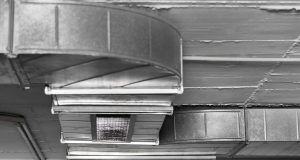
Having paperwork properly organised within a home office can make a huge difference to productivity. With more of us working from home due to the coronavirus pandemic, many people are suddenly having to get used to managing their own workspace, without the benefit of professional office design. Furniture At Work has many stylish storage solutions, representing great value for money and the opportunity to get everything in order, resulting in a much more pleasant working environment.
Gathering Paperwork
The first step to getting properly organised is knowing how much paperwork you actually have. All documents and other papers should be gathered together so the extent of the storage required can be identified. After the initial collection, some papers may be deemed unnecessary and can be thrown away. Remember to check other areas of the house where important documents may have migrated to ensure everything has been brought to one place. Ideally this will be a large table or other area where it is possible to temporarily spread everything out for evaluation.
Categorise
The next step is to divide all of the paperwork into categories, depending on how much there is and how many areas it relates to. A good way to start is to separate actionable documents (those that require action in the near future), documents for archiving (documents that need storing even though they will not be needed in the near future), household paperwork, and documents to be recycled or shredded. Once this has been done, the important documents can be sub-divided by category such as work, property, personal etc. Keeping work and household paperwork in separate areas can help to reduce the risk of confusion.
Make Copies
All essential household and personal documents – such as birth certificates and house deeds – should be stored together somewhere safe. However, it can also be a good idea to make copies of these and store them separately, in case of loss, mishap or emergency.
Archive
Many work and home documents will go into archive files, which should be organised enough to be able to find individual documents if required. However, these files will contain paperwork that does not need to be looked at regularly or in the near future, for example tax records, insurance certificates and employment contracts. These should be kept in a locked fireproof box or filing cabinet once organised.
Action Files
Documents that require immediate action are usually best kept out in the open, where the sight of them will remind you that work needs to be done. Using a paper tray as an inbox will ensure that these documents don’t get hidden away and forgotten about. Keeping this box shallow will help you to resist the temptation to allow it to fill up too much before tackling paperwork.
Furniture At Work stocks a wide range of filing cabinets, paper trays, storage boxes and other storage equipment to help workers get their home office organised and never waste time searching for important documents again.













